When it comes to the likes of abandoned recording studios, homes and even completely untouched schools, there’s invariably not only a sense of sadness, but also the mystery as to why things ended the way they did. With a large number of Japan’s long-closed hotels, however, the real sadness is invariably in the depressing predictability of their demise.
Built in briefly booming resort areas, they generally boasted pleasant rooms, lavish function halls and state of the art entertainment.
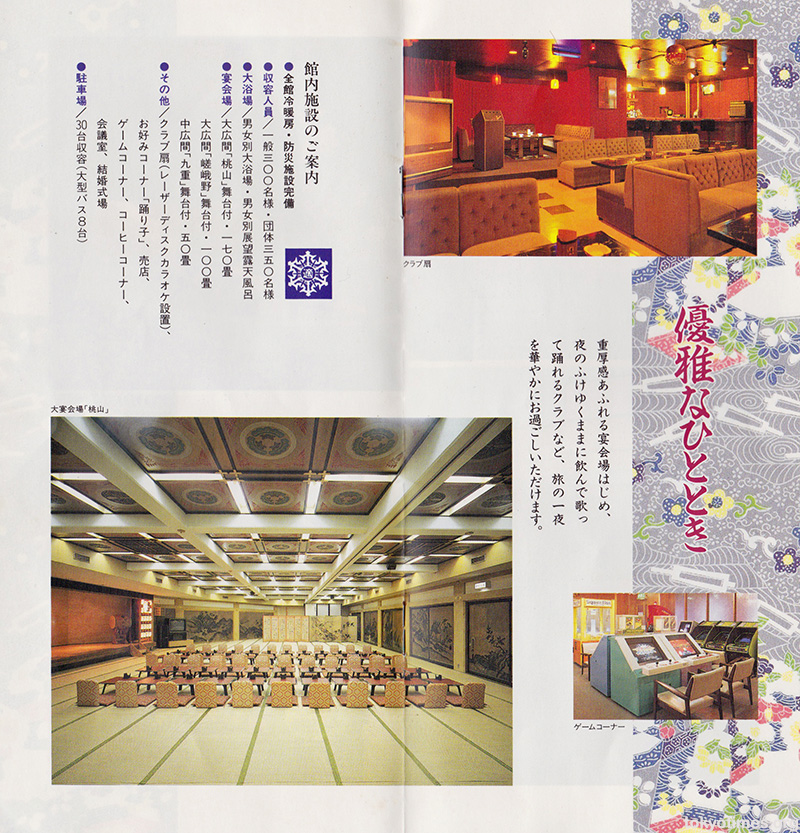
Places where guests could be expected to happily kick back and enjoy a relaxing break from the stresses of city life.
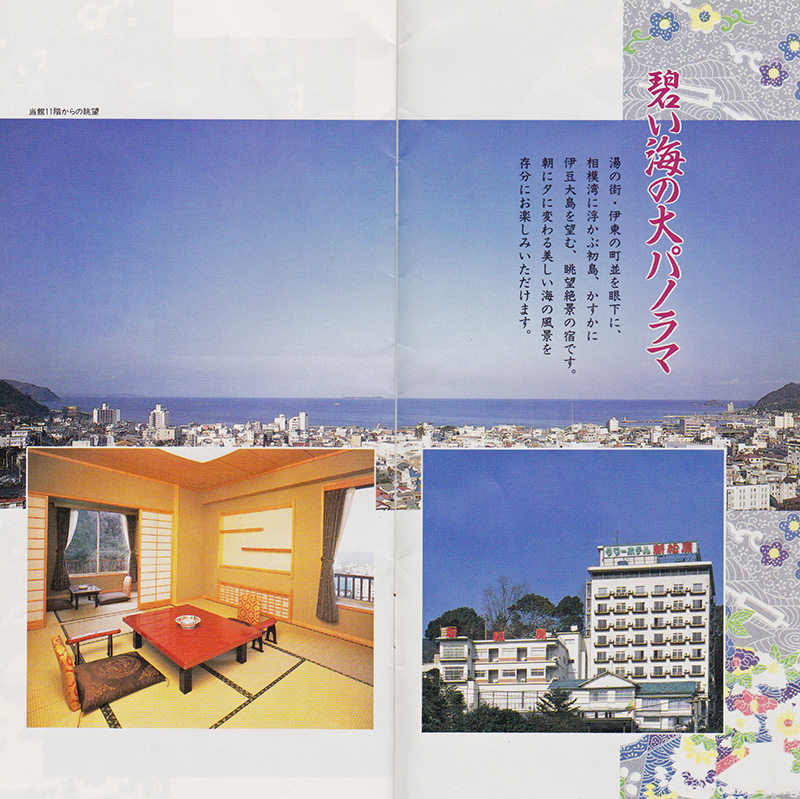
Huge expenditure based on the overly optimistic idea that the good times would never end. But they did. Often quite quickly. And the Tower Hotel is another casualty on a long and lamentable list.
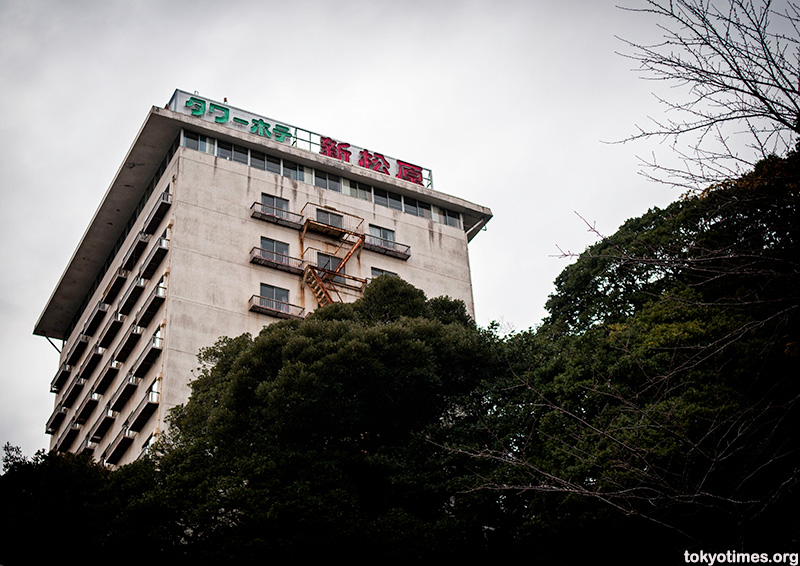
To be fair though, some visitors did enjoy enjoy it.
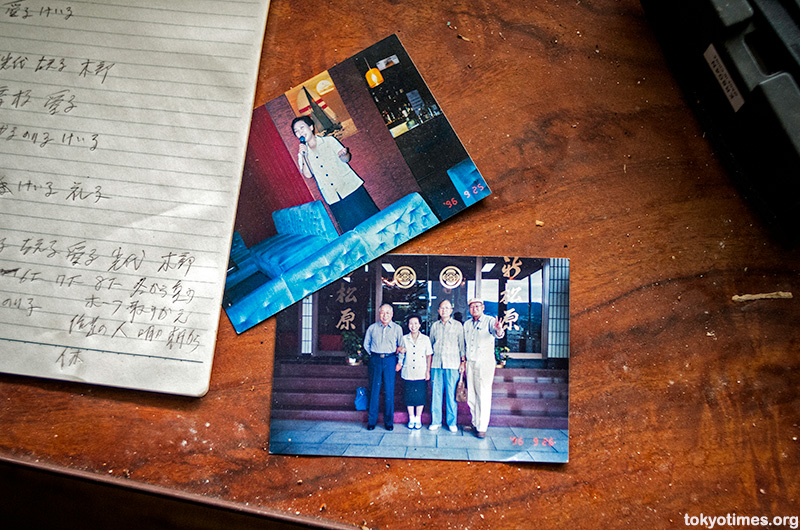
Or they at least tried to.
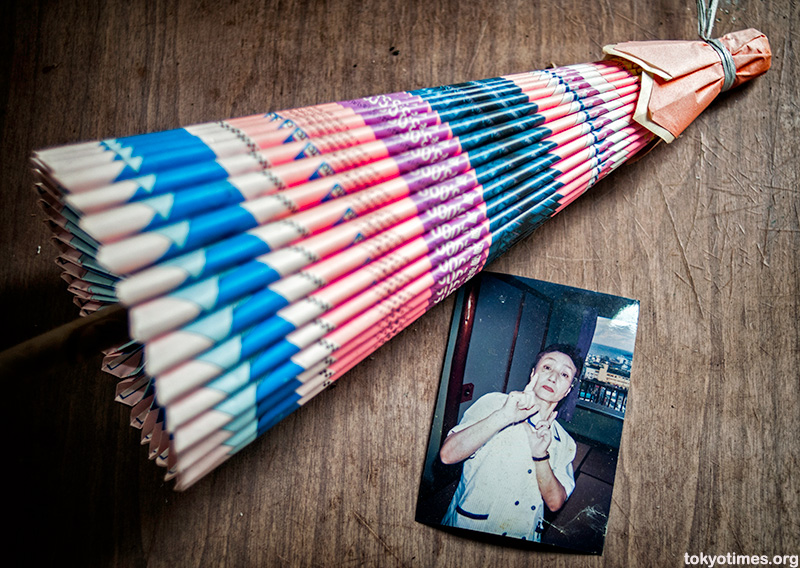
But, as the tourist boom faded, so did the once lavish accommodation that catered for them. The rooms never getting updated to match the times.
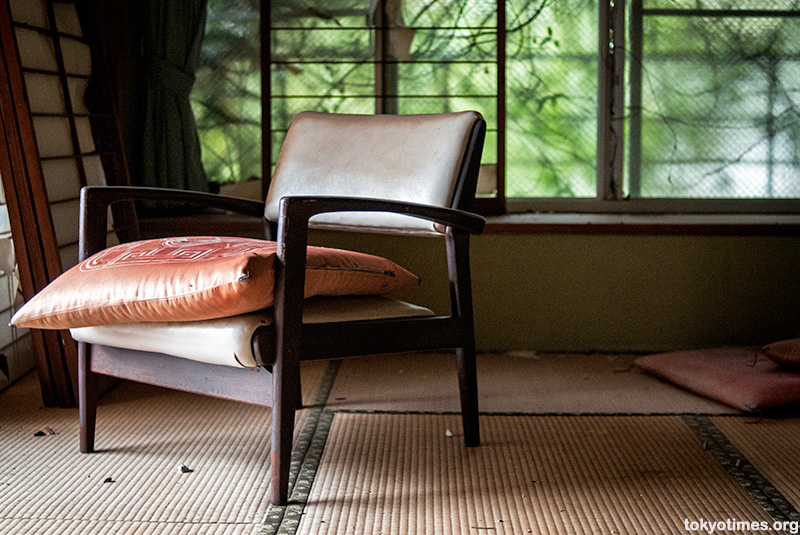
With mod cons such as fridges not especially tempting to potential guests — particularly so in the year 2000 when the Tower finally closed its doors.
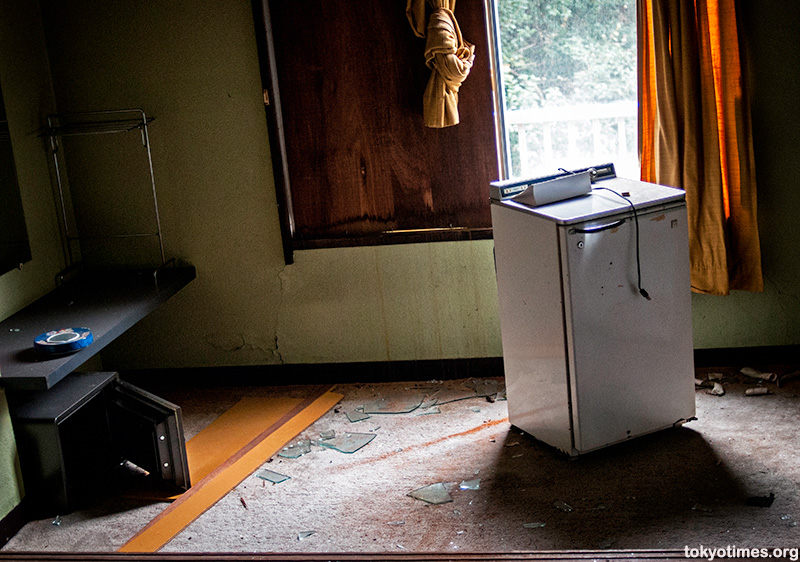
The vicious circle of tired old rooms not bringing the money in; money desperately needed to refurbish said rooms in order to be competitive again. Although that said, it’s hard to imagine any amount of expenditure making some of them even remotely appealing, as gazing out at a corrugated wall is generally not what people want on a weekend away.
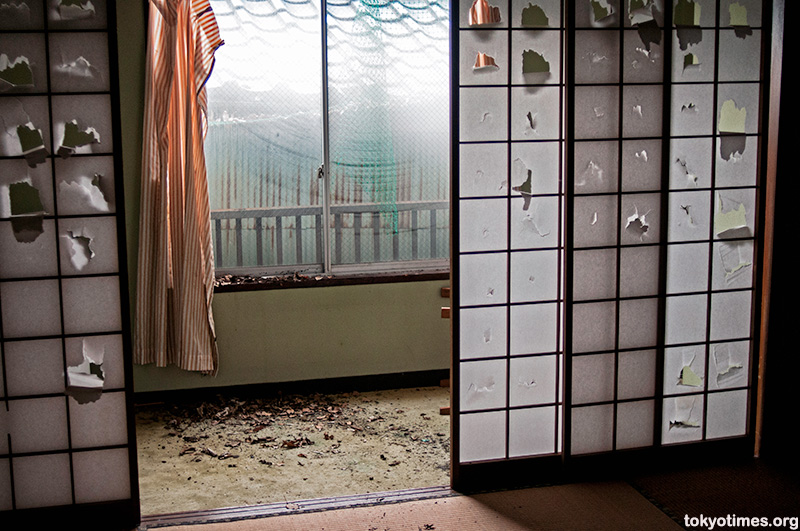
There again, neither is playing woefully outdated video games.
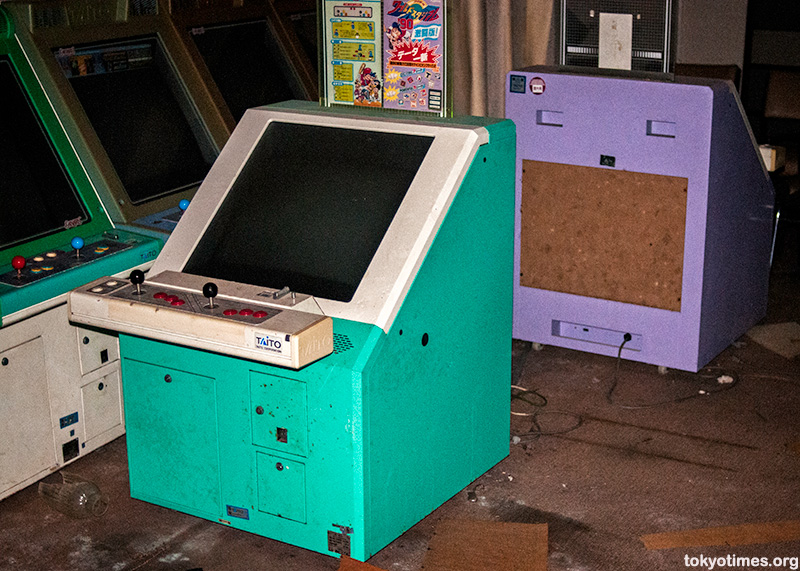
Plus even drinking away the disappointment wasn’t really an option. The bar.
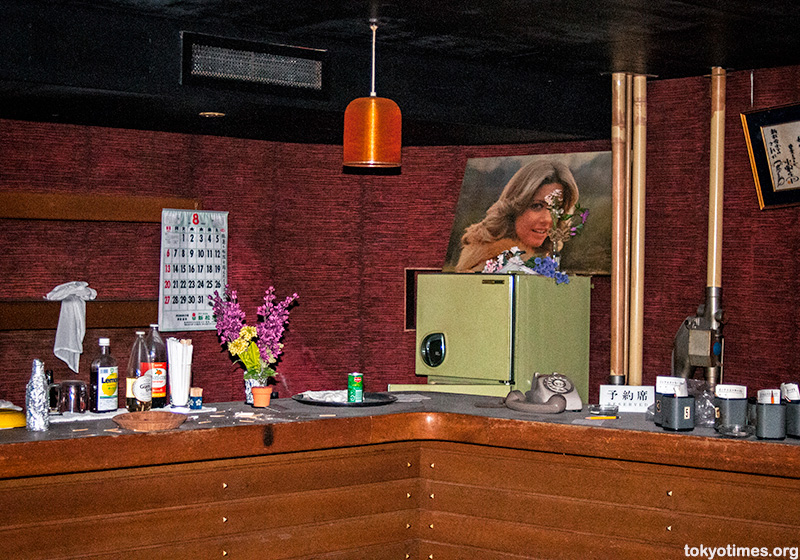
Twin Peaks-esque decor.
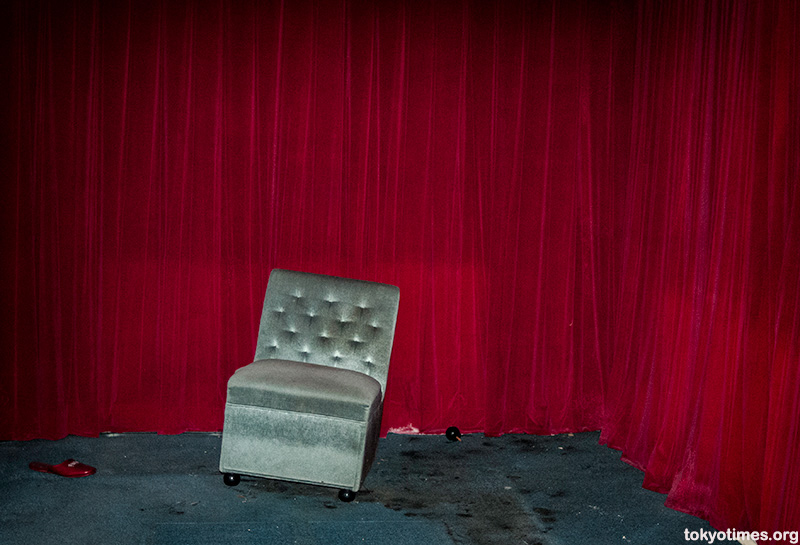
And far from exotic exotic window stickers.
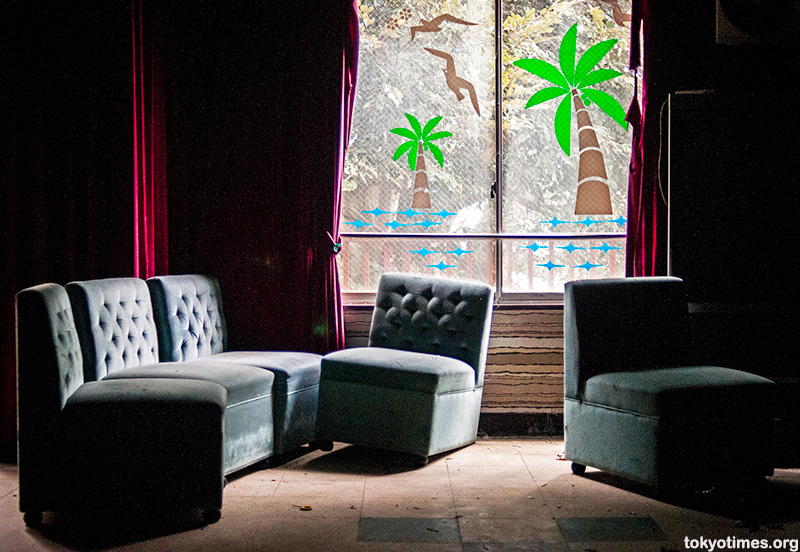
All provided a backdrop that even copious amounts of alcohol would have been hard pushed to obliterate. Perhaps the only blessing being that reserving a table wouldn’t have been a worry.
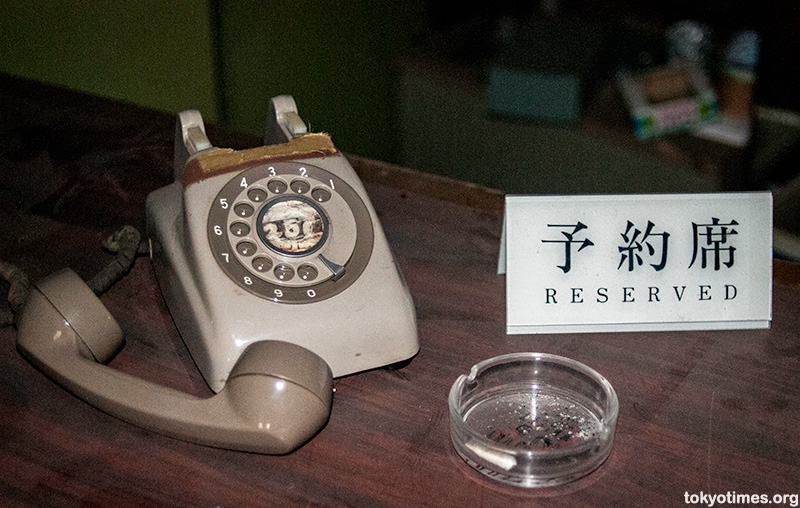
But, on the way back to their rooms, they’d at least have had the chance to pause on this lovingly recreated bridge and ponder an era other than the one that permeated the rest of the hotel.
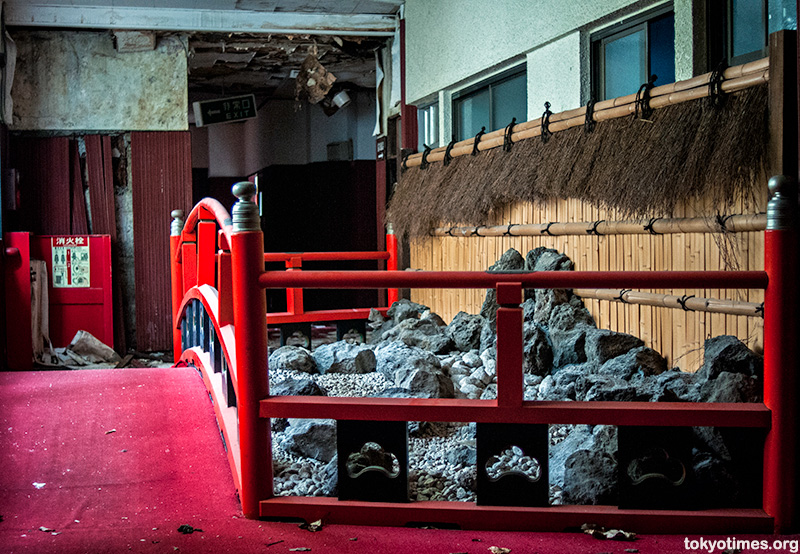
Chris says
How do you find places like this? I really enjoying seeing the places that time and the economy left behind.
Lee says
The internet generally. That said, new ones are becoming increasingly hard to find, but hopefully they’ll keep cropping up.
winnie says
Awesome!!
Love this entry!
It is sad that the hotel ended this way. Sometime I wonder why there are so many of them been abandoned around in Japan. (I did not know much until I started to read your blog, I am so ignorance. Thank you very much for sharing)
The rooms with torn shoji looked a bit eerie. so do the tilt sofa. But the picture of the bridge is my favourite!
Lee says
Thank you!
Yes, there’s no shortage of old hotels that’s for sure. I can only imagine how many outstanding loans there must be…
Yeah, the bridge is probably my favourite. Perfectly sums up the hotel in many ways.
Martin says
I would have found that hotel pretty depressing even at its best.
I have a question. Why are there so many abandoned properties in Japan that have obviously been that way for a long time? Other than to provide a home for ghosts or material for your art they must be worth something.
Lee says
That’s what I kept thinking. Heaven knows what guests must have felt when they rolled up there, especially in the late 90s…
Why there are so many I can’t say for sure, but one reason I presume is the cost of demolishing them before anything else can be done. Plus they are often not in the most sought after places.
Martin N. says
First of all, I’m not the Martin above, just another one 🙂
Secondly, I can’t imagine that costs for demolishing is the reason because here in Germany for example it’s less expensive than remodeling or rebuilding places… I just wonder what other reasons they might have to leave such eerie locations like these.
In that case: Great pictures. Love to see more of them 🙂
Lee says
Cheers!
Interesting. That was only a guess, so it could well be wrong. I certainly am if the costs are similar here. What other reasons there could be though I really don’t know. Location may well have something to do with it. Issues with land ownership too perhaps? It’d certainly be interesting to get some actual answers rather than just speculating on what they may be.
Don says
Wow. Very nice narrative!
Lee says
Thank you!
Willy says
Looks like one of the more ex-opulent ones.
The kuzu and moss and bats and bugs and mold will come to rule!
Yay for Japanese capitalism! A grand experiment in Biology!
Lee says
Yeah, on the whole it was surprisingly still very much intact. It was fairly well boarded up on the lower floors, so I guess that has helped. But some serious damp had got into a few places, making it a bit dicey, so it won’t be too long before nature starts making some serious inroads I suspect.
kawther says
Hello~~
Love this article!! But just one question, are places like these usually up for sale? And if so, where could you buy it?
Lee says
That’s a good point. The land at least must presumably be for sale. But of course with it comes the cost of demolishing a huge hotel. Where on earth you’d find the details though, I don’t know.
Lizzy says
Oh my! I think the pictures left behind are most surprising. Must not have been very good memories…
Lee says
When it first opened I’m sure it would have been very nice, but yeah, it must have been really grim towards the end. Forced smiles all round…
Theresa Amlong says
It’s just amazing to me not just that you can gain entry so easily, but that all the furnishings and such are still intact – some of which still look in decent shape. It seems that some of it could have been sold off instead of being left behind to gather dust. hey – where was the dust?
Lee says
Possibly, but by the time it closed in late 2000, most of the stuff would have been too dated to sell I suspect.
Yeah, it wasn’t that dusty at all. It was fairly well sealed which presumably has something to do with it. A factor which also meant we couldn’t just walk in the front door which is so often the case. Fortunately though, climbing a small wall allowed us to get in without too much trouble.
Theresa Amlong says
Awesome! Keep up the adventure seeking! Love your blog.
Lee says
I will. Thanks!
Phil J says
Another great post Lee,
I love your Haikyo adventures, its been too long since your last one, I imagine that its getting harder to find these places. Thanks for taking the time to share these with us.
Lee says
Thanks a lot, Phil.
It had. And you are right, not always easy to find new places. Or indeed places that are still standing. On the way to this hotel we went to photograph an old retirement home, but it had been demolished and a new building was already in its place…
There will be more though. All being well, sooner rather than later too.
Claire says
Do you think that buildings are left standing since waste disposal can be a difficult and expensive proposition? I often wonder if demolition and removal would cost more than the land is worth.
Lee says
It’s certainly possible that it is part of the reason, but I honestly don’t know. Hard to imagine it’d cost more than the land is worth though. Even in areas like this, well away from Tokyo. One things for sure though, there are plenty of places just like it.
kidd says
Yay! I’ve been waiting for a new haikyo post, it certainly didn’t disappoint. I love it when you find left behind photos like the ones you have here. I wonder where are those people now and how are they doing. Oh and I’ve always wanted to try poking my finger through those paper sliding doors. Awesome post as always 🙂
Lee says
Thanks a lot! It had certainly been a while.
Yeah, that’s one of the things I really like about haikyo. Those snippets of people’s lives. People we will never know, but yet we are allowed a glimpse into their past — albeit a very brief one.
Tony Richards says
Great article. Where exactly is this place as I’d really love to pay a visit as it looks like a great place to stay!